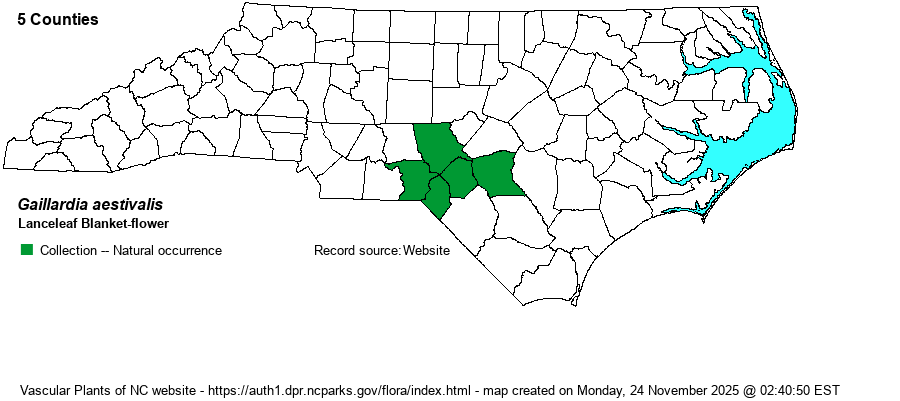| Author | (Walter) H. Rock | |
| Distribution | Sandhills only.
Coastal Plain, NC to central FL and eastern TX. | |
| Abundance | Rare to uncommon, but easily overlooked owing to a lack of ray florets and a scarcity of stem leaves. This is a State Endangered species. | |
| Habitat | Dry to mesic (loamy sand) Longleaf Pine-oak-Wiregrass uplands, including flat areas; roadsides through these habitats, clearings. Most sandy sites in the region are too dry for it to occur. |
| Phenology | Flowering and fruiting July-October. It is an annual or short-lived perennial. | |
| Identification | The species is easily identified by the dark red-purple disks about an inch across and which lack ray florets. The plant grows 1-2 feet tall, with basal leaves oblanceolate (lance shape but widest towards the tip), and stem leaves rapidly reduced in size and lacking stalks. Note that in states to our south, the species typically does have yellow rays, variously long or quite short. Do not be misled by photos of the species, expecting to search for a "sneezeweed" type of composite! When actually seen in the state, you will wonder if the species is actually in bloom or not -- as you are staring at a dark rosy-purple, marble-sized "ball" on top of a rather naked stem. | |
| Taxonomic Comments | The taxon found in NC is the nominate var. aestivalis.
| |
| Other Common Name(s) | Sandhills Gaillardia, Sandhills Blanket-flower | |
| State Rank | S1S2 | |
| Global Rank | G5 | |
| State Status | [E] | |
| US Status | | |
| USACE-agcp | | |
| USACE-emp | | |

